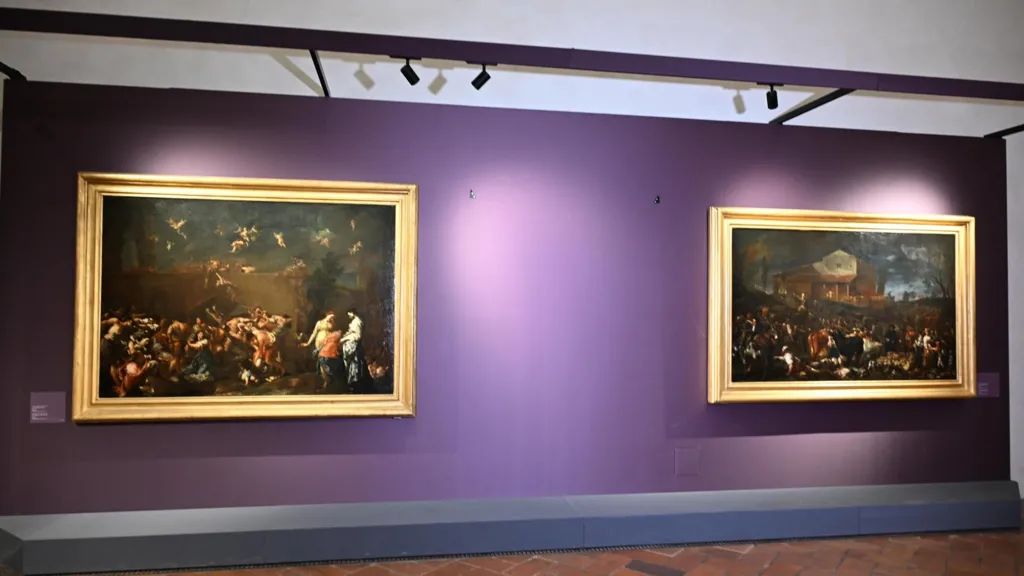A visitor at Florence’s Uffizi Gallery damaged a 300-year-old portrait of Ferdinando de’ Medici while attempting to take a meme-style photo, prompting museum officials to consider stricter behavioral restrictions for tourists.
Incident Details and Museum Response
The damage occurred when a tourist fell backwards while posing in front of Anton Domenico Gabbiani’s portrait of Ferdinando de’ Medici, Grand Prince of Tuscany, creating a small tear in the 18th century canvas. Security footage captured the moment the visitor leaned back to “make a meme” and accidentally collided with the artwork, resulting in visible damage to the historical piece.
Museum staff immediately removed the painting for assessment and repair work. The portrait, painted around 1712, sustained a tear near the subject’s right foot, though experts determined the damage to be relatively minor and repairable. The affected artwork was part of the exhibition “Florence and Europe: Arts of the Eighteenth Century,” featuring approximately 150 masterpieces by renowned artists including Goya, Tiepolo, and Canaletto.
The exhibition has been temporarily closed until July 2nd to allow for restoration work, after which it will reopen with the repaired painting back on display. The show is scheduled to run through November 28th as originally planned. Police have identified the responsible visitor, who has been reported to judicial authorities and faces potential prosecution for damaging cultural heritage.
Uffizi director Simone Verde expressed frustration with the growing trend of inappropriate museum behavior, stating that “the problem of visitors coming to museums to make memes or take selfies for social media is rampant.” He warned that the institution would implement “very precise limits, preventing behavior that is not compatible with the sense of our institutions and respect for cultural heritage.”
Pattern of Museum Incidents Raises Safety Concerns
This incident represents part of a troubling pattern affecting Italian cultural institutions. Earlier in June, tourists at Palazzo Maffei in Verona damaged a crystal-encrusted chair artwork by Nicola Bolla while attempting to pose for photographs. The visitors pretended to sit on the piece before one slipped and fell, causing the decorative chair to shatter.
Palazzo Maffei director Vanessa Carlon described the incident as “a museum’s worst nightmare,” noting that “sometimes we lose our brains to take a picture, and we don’t think about the consequences.” The perpetrators left the scene without reporting the damage, compounding the severity of their actions.
Similar incidents have occurred at other prestigious venues, including a 2022 case at Rome’s Galleria Borghese where an elderly American tourist tripped on a raised platform and tore a 17th century painting by Guido Reni. Museum staff reported that multiple visitors had previously stumbled on the same platform, though fortunately without damaging artwork.
Some museum representatives attribute these accidents to inadequate infrastructure, with Uffizi staff member Silvia Barlacchi noting that “visitors are looking at the paintings, not at the ground” and describing exhibition platforms as “unsuitable and too dark.” However, others place responsibility squarely on distracted tourists prioritizing social media content over cultural respect.
The trend reflects broader challenges facing cultural institutions as they balance accessibility with preservation. Museums worldwide struggle to accommodate smartphone-wielding visitors while protecting priceless artifacts from accidental damage. The Uffizi’s planned behavioral restrictions may signal a shift toward stricter policies governing visitor conduct in cultural spaces.
These incidents highlight the tension between museums’ educational mission and the reality of modern tourism, where cultural experiences increasingly serve as backdrops for social media content rather than opportunities for genuine engagement with artistic heritage.


